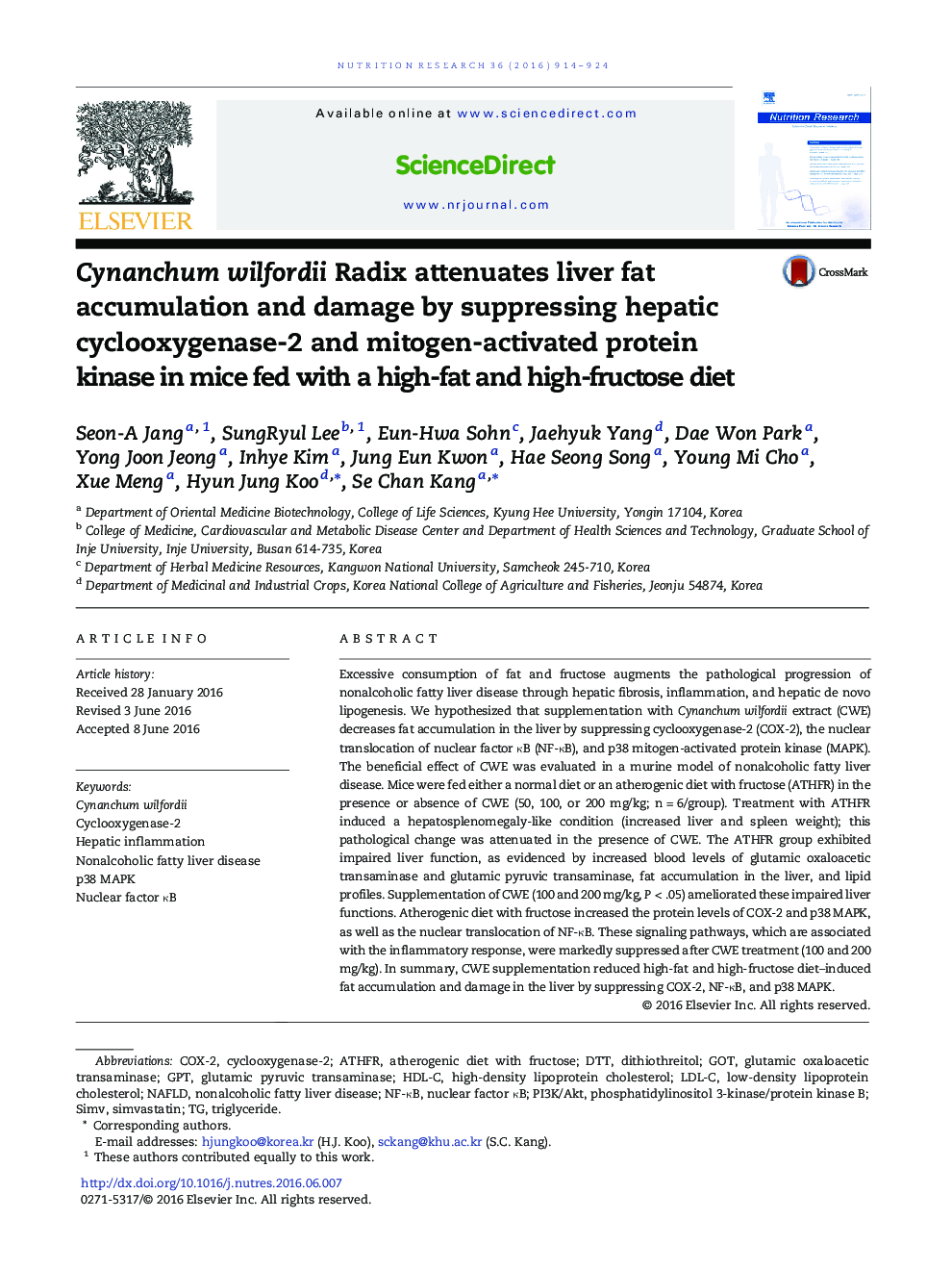| Article ID | Journal | Published Year | Pages | File Type |
|---|---|---|---|---|
| 2808797 | Nutrition Research | 2016 | 11 Pages |
Excessive consumption of fat and fructose augments the pathological progression of nonalcoholic fatty liver disease through hepatic fibrosis, inflammation, and hepatic de novo lipogenesis. We hypothesized that supplementation with Cynanchum wilfordii extract (CWE) decreases fat accumulation in the liver by suppressing cyclooxygenase-2 (COX-2), the nuclear translocation of nuclear factor κB (NF-κB), and p38 mitogen-activated protein kinase (MAPK). The beneficial effect of CWE was evaluated in a murine model of nonalcoholic fatty liver disease. Mice were fed either a normal diet or an atherogenic diet with fructose (ATHFR) in the presence or absence of CWE (50, 100, or 200 mg/kg; n = 6/group). Treatment with ATHFR induced a hepatosplenomegaly-like condition (increased liver and spleen weight); this pathological change was attenuated in the presence of CWE. The ATHFR group exhibited impaired liver function, as evidenced by increased blood levels of glutamic oxaloacetic transaminase and glutamic pyruvic transaminase, fat accumulation in the liver, and lipid profiles. Supplementation of CWE (100 and 200 mg/kg, P < .05) ameliorated these impaired liver functions. Atherogenic diet with fructose increased the protein levels of COX-2 and p38 MAPK, as well as the nuclear translocation of NF-κB. These signaling pathways, which are associated with the inflammatory response, were markedly suppressed after CWE treatment (100 and 200 mg/kg). In summary, CWE supplementation reduced high-fat and high-fructose diet–induced fat accumulation and damage in the liver by suppressing COX-2, NF-κB, and p38 MAPK.
